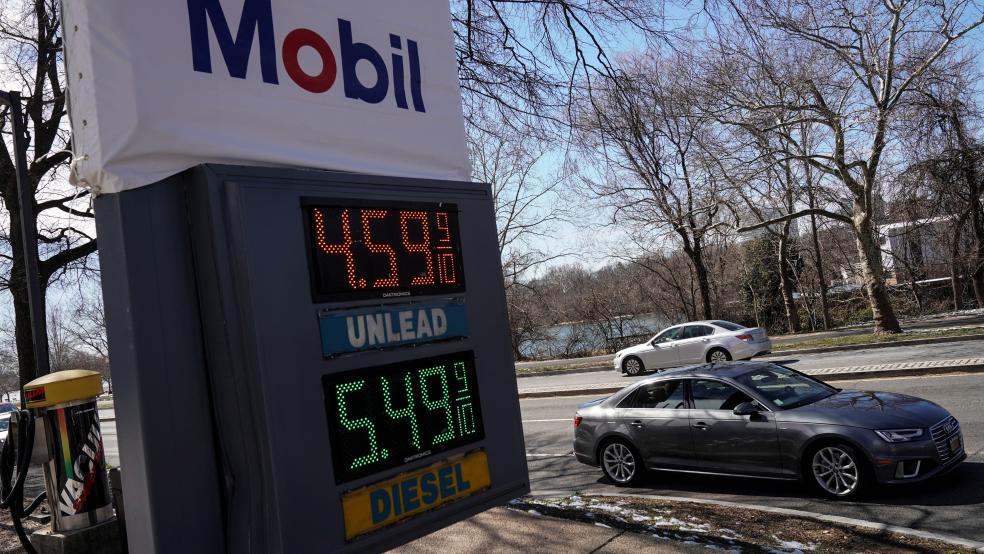Driven by the soaring cost of food, gasoline and rent, consumer prices rose at a 9.1% annual rate in June, the Labor Department said Wednesday as it reported the highest inflation level in four decades.
Economists had expected the annual inflation rate to hit 8.8% in June, up from 8.1% in May, but the monthly total was even higher, dashing hopes that price hikes had peaked.
Core inflation, a measure that removes volatile food and fuel prices, also rose by a higher-than-expected 5.9% – below the recent peak reading of 6.4% and slightly lower than a month earlier, but still extraordinarily high.
Overall, the report was both a disappointment and something of an alarm about the state of the economy. “[T]here is absolutely nothing good in the CPI report,” wrote former Obama administration economist Jason Furman, who added that a slowdown in the growth of wages might provide some glimmer of hope.
Some painful details: The Washington Post’s Heather Long highlighted specific goods that saw big price hikes, including:
* Overall grocery prices have risen 12% in the past 12 months, the biggest increase since 1979;
* Chicken prices have risen 19% in the past year, the largest increase on record;
* Gas prices rose by 60% from June 2021 to June 2022, the biggest increase since 1981;
* The cost of electricity has risen by 14%, the largest annual increase since 2006.
White House offers a positive spin: President Joe Biden said the June inflation report fails to capture more recent declines in the price of gasoline and emphasized the three-month decrease in the core inflation rate.
“While today’s headline inflation reading is unacceptably high, it is also out-of-date,” Biden said in a statement. “Today’s data does not reflect the full impact of nearly 30 days of decreases in gas prices, that have reduced the price at the pump by about 40 cents since mid-June.” The average price of gasoline has dropped from a peak of more than $5 a gallon in June to $4.63 today, according to AAA.
White House economic adviser Jared Bernstein said the report should spur lawmakers to work together to pass legislation aimed at lowering drug and utility prices, and building more housing. “Inflation reports like this one should get every politician out and pushing in the same direction,” Bernstein told The Washington Post. “Democrats are already there. Republicans need to join.” But with both eyes fixed on the upcoming midterm elections, Republicans are not expected to cooperate on legislative efforts to address rising prices.
The Fed could become even more aggressive: The eye-popping inflation number could push the Federal Reserve to raise interest rates by a full percentage point at its next meeting on July 26-27, above the already aggressive 0.75 percentage points many analysts have been expecting.
“Incoming data suggests the Fed’s inflation problem has worsened, and we expect policy makers to react by scaling up the pace of rate hikes to reinforce their credibility,” analysts at Nomura wrote in a note Wednesday. Economists Anna Wong and Andrew Husby said that the “Fed is right to worry about the unmooring of inflation expectations -- and this report raises the chance of an even larger rate hike than 75 basis points down the line.”
Andrew Hollenhorst, chief US economist at Citigroup, said, “You have to put 100 on the table for July. Everybody should be quite cautious about calling peak inflation, a few months ago the peak was supposed to be 8.3%.”
Is a recession coming? More analysts are now predicting a recession, driven by the likelihood of more aggressive monetary tightening by the Fed as well as the bite inflation is taking out of consumers’ pocketbooks.
Economists at Bank of America said Wednesday they are forecasting a “mild recession this year,” arguing that consumer spending is slowing as prices soar. “A number of forces have coincided to slow economic momentum more rapidly than we previously expected,” BofA analysts wrote. The bank now estimates that economic growth will fall by 1.4% in the fourth quarter before returning to positive growth in early 2023.
The bottom line: The latest monthly snapshot tells us that inflation is still raging, with no clear sign of when it might fall back to more sustainable levels. “Peak inflation will have to wait,” Rusty Vanneman of Orion Advisor Solutions told Fortune magazine. “While there are some hopeful signs that we’re getting close to the peak in the inflation growth rate, such as lower commodity prices, we likely won’t see the actual peak for months, if not until early next year.”




